Following the French invasion of Egypt in 1798 and Napoleon’s defeat of Egyptian forces, which consisted largely of the ruling Mamluk military caste, the Ottoman Empire dispatched troops from Rumelia (the Balkan provinces of the Ottoman Empire) under the command of Muhammad Ali Pasha to restore the Empire’s authority in what had hitherto been an Ottoman province. However, upon the French defeat and departure, Muhammad Ali seized control of the country, and declared himself ruler of Egypt, quickly consolidating an independent local powerbase. After repeated failed attempts to remove and kill him, in 1805, the Sublime Porte officially recognized Muhammad Ali as Pasha and Wāli (Governor) of Egypt. However, demonstrating his grander ambitions, he claimed for himself the higher title of Khedive (Viceroy), as did his successors, Abbas I, Sa’id I and Ibrahim Pasha.
The Muhammad Ali dynasty’s use of the title Khedive was not sanctioned by the Ottoman Empire until 1867[2] when Sultan Abdülaziz officially recognized it as the title of Ismail Pasha. Moreover, the Porte accepted Ismail’s alteration of the royal line of succession to go from father to son, rather than brother to brother, as was the tradition in the Ottoman Empire, and Arab dynasties. In May 1879, the British Empire and France began pressuring the Ottoman Sultan Abdülhamid II to depose Ismail Pasha, and this was done on June 26, 1879. The more pliable Tewfik Pasha, Ismail’s son, was made his successor as the new Khedive.
After the nationalist Urabi Revolt of 1882, Britain invaded Egypt in support of Tewfik Pasha, and would continue to occupy and dominate the country for decades. During this period, the Muhammad Ali Dynasty under Tewfik Pasha and his son Abbas Hilmi Pasha continued to rule Egypt and Sudan using the title Khedive, whilst still under nominal (de jure) Ottoman sovereignty until 1914.
Beginning with the Crimean War (1853-1856), the French-style uniform and court dress were common during the early stage of the modernization period in the Ottoman court. After the French defeat in the Franco-Prussian War (1870-1871), he forced the Ottoman government to look for other role models, German and British style uniforms became popular. During World War I, officers’ uniforms were mainly based on the German pattern.
The figure shows the Kaymakam of the Guard (equivalent rank to Lieutenant-Colonel). Descended from the Ottoman heavy cavalry, the cuirassiers made up the personal guard of Egypt’s Viceroy –khedive-Ismail I. Like the rest of the Ottoman army, the cavalry was also reorganized on Western models from the mid-1840s. In their uniform, the cuirassiers retained the traditional helmet, but replaced the earlier armour with a cuirass, copy of the French model.
NOTE (1)
Were a primary administrative division of the Ottoman Empire. The term eyalet is sometimes translated province or governorate.

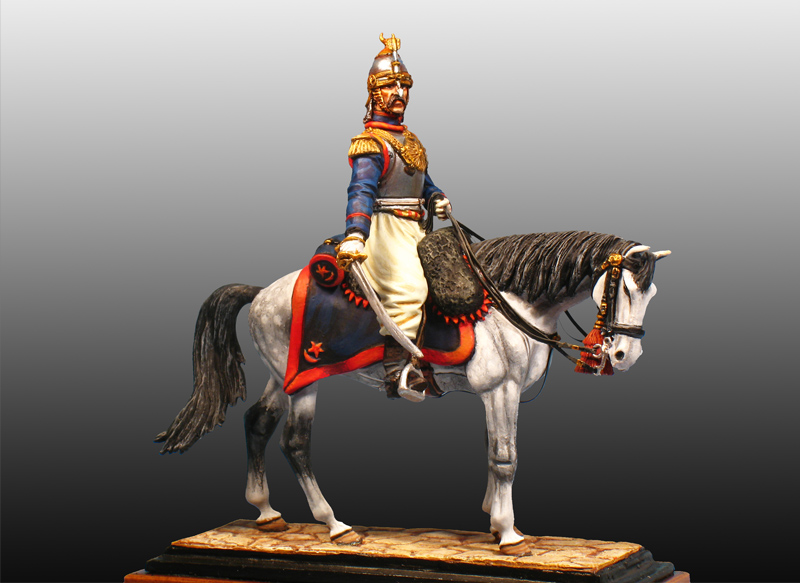
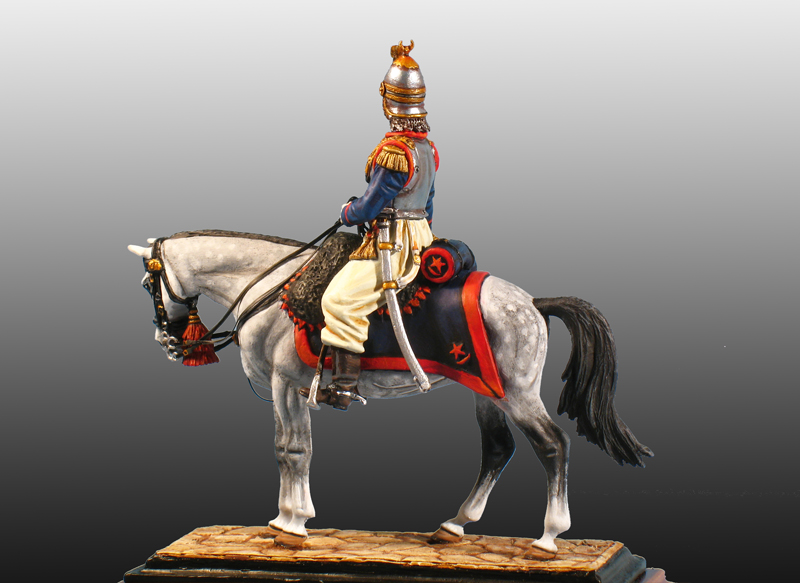


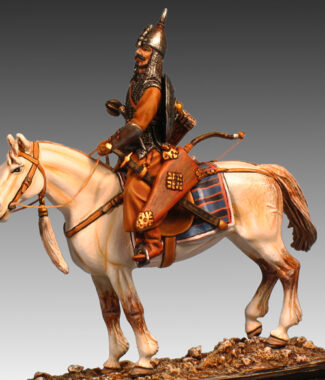
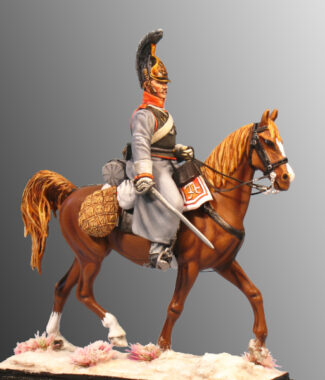
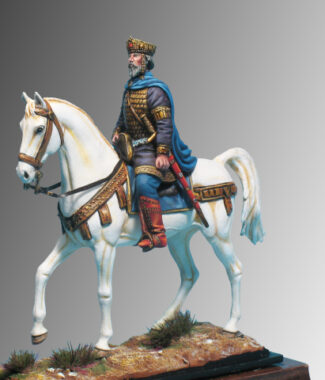
Reviews
There are no reviews yet.